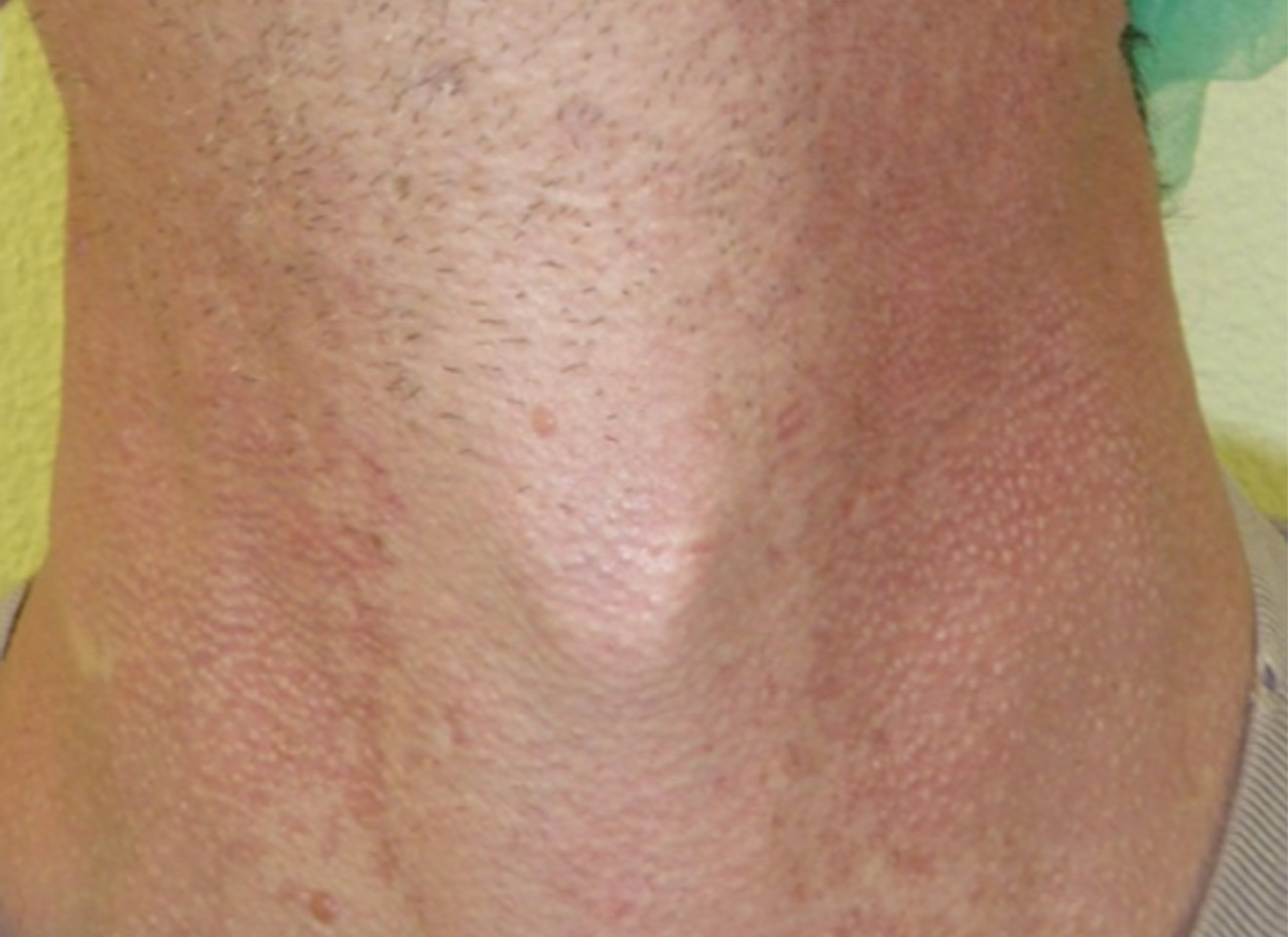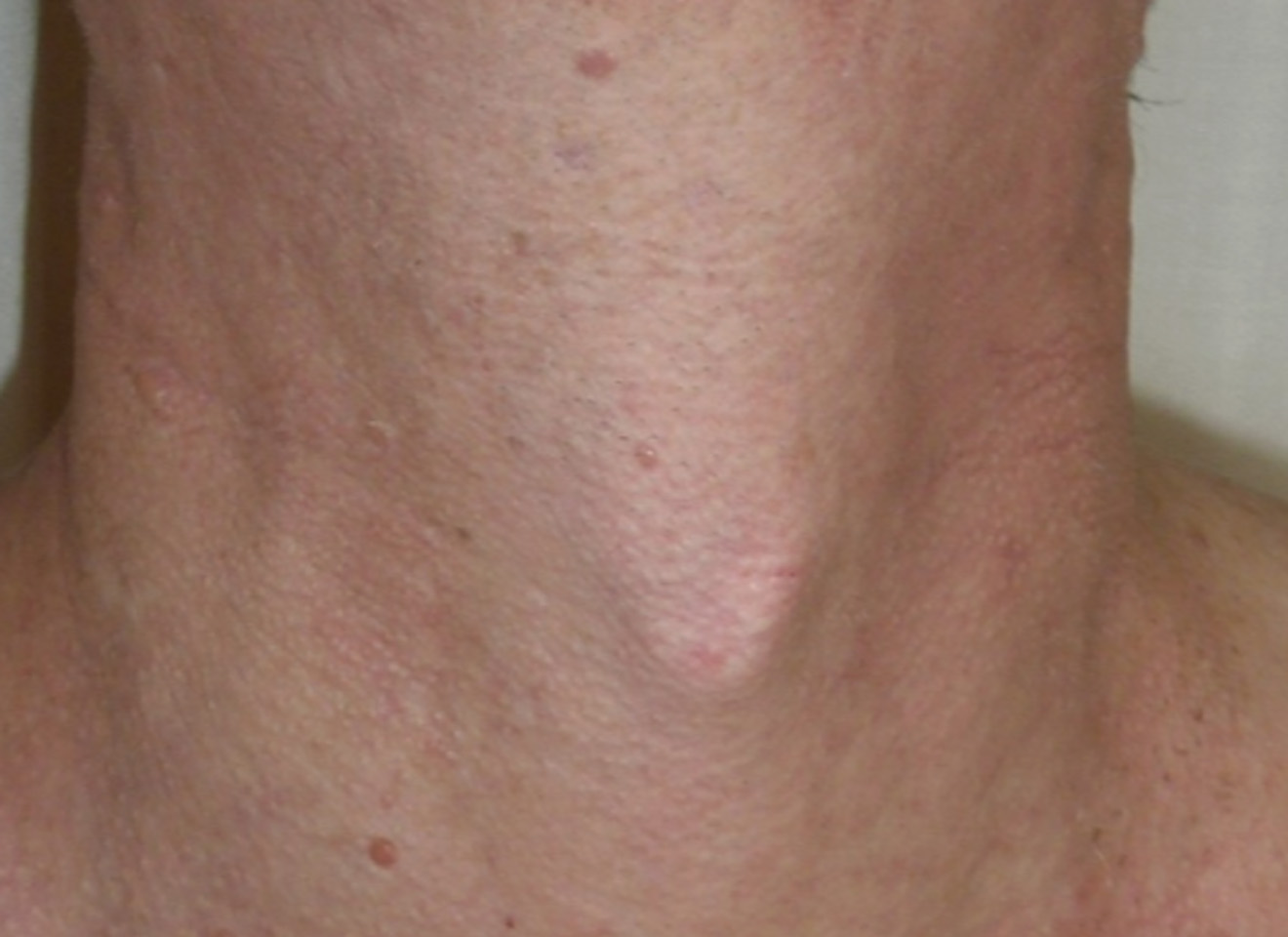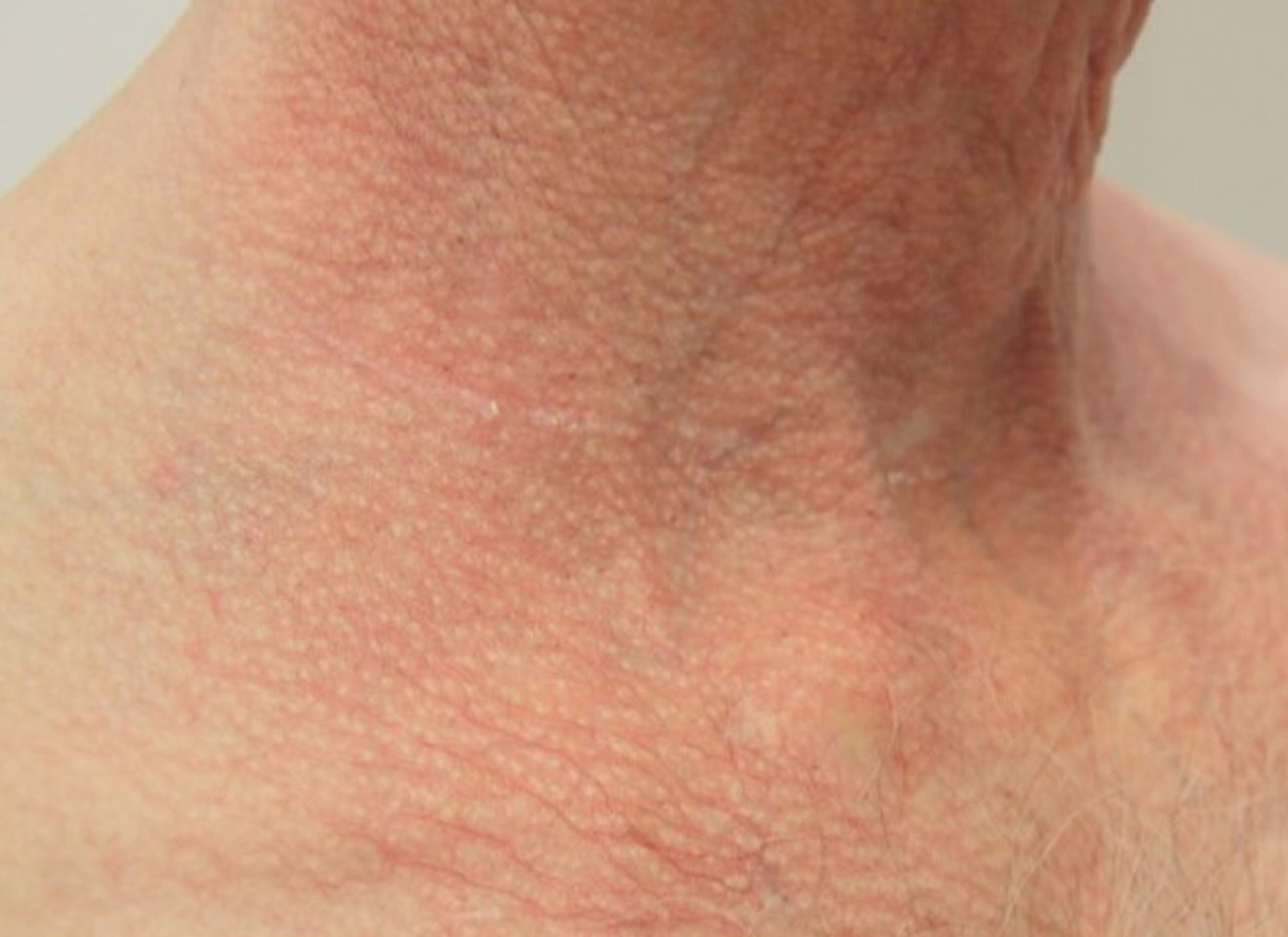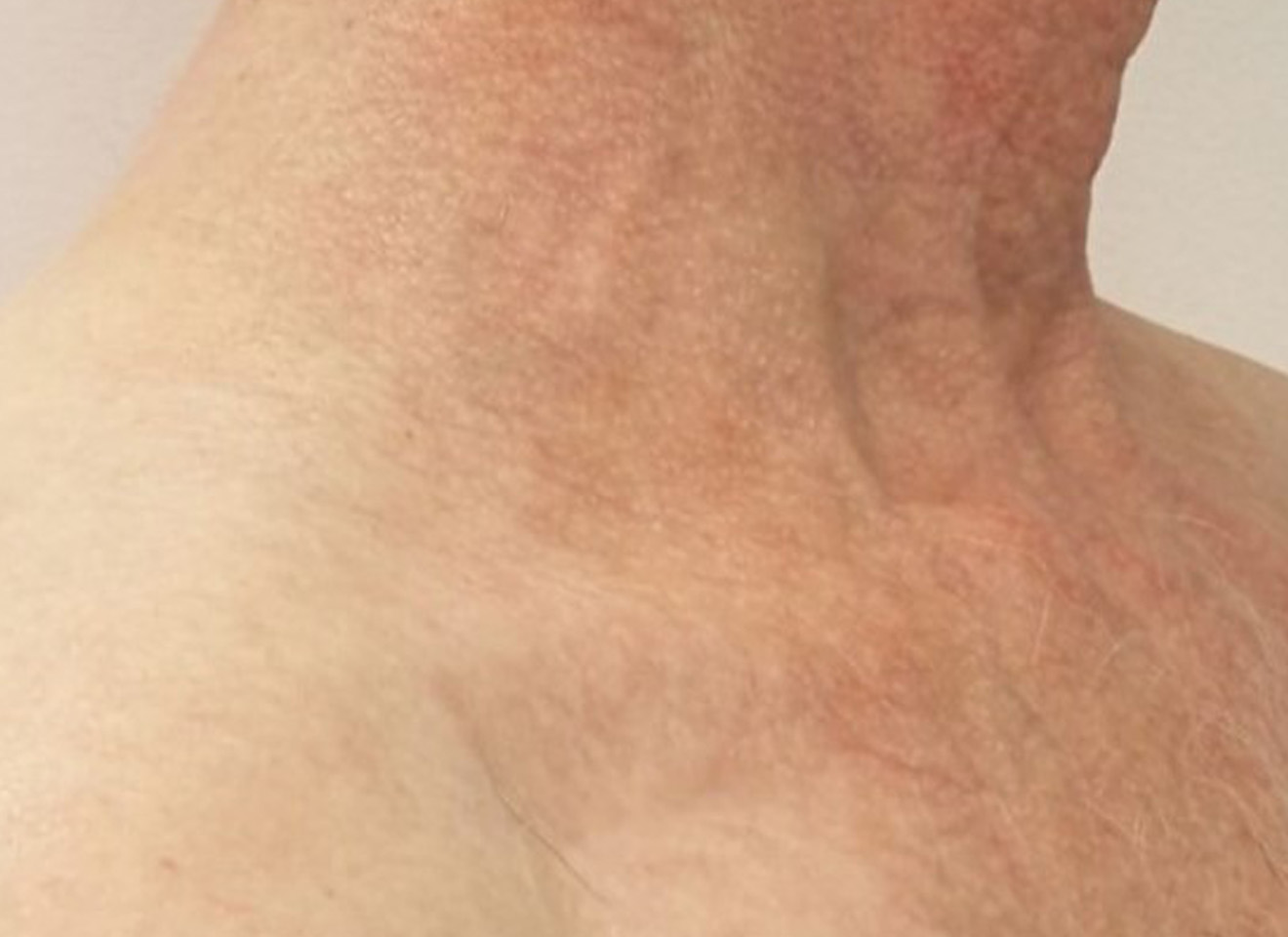Centre Biolaser Mulhouse/Saint-Louis: doctors specialising in the treatment of redness and brown spots on the neck and décolleté
Erythrosis coli is a skin condition characterized by diffuse redness on the back of the neck, creating the appearance of a reddened neck. It is often associated with environmental factors, such as excessive sun exposure or irritating cosmetic products. Common symptoms include persistent redness, tingling, or a burning sensation on the skin of the neck.
On the other hand, Civatte’s poikiloderma is a skin condition that manifests itself as reddish, brown, and pale spots on the skin, usually on the neck and décolleté, but sometimes also on the face. The term “poikiloderma” refers to a change in the skin with atrophy where changes in hypopigmentation/hyperpigmentation and dilation of the fine blood vessels (telangiectasia) on the affected skin can be observed. It is often linked to excessive sun exposure and genetic factors. Civatte’s poikiloderma is often physically asymptomatic , but it can be considered a cosmetic concern.
At Centre Biolaser Mulhouse – Saint-Louis, we understand the aesthetic challenges posed by these skin conditions. Our highly trained team offers a range of advanced aesthetic treatments to reduce the appearance of erythrosis coli and civate poikiloderma. We’re committed to helping you regain healthier skin and a revitalized appearance with our personalized solutions.
Erythrosis Coli – Civatte poikiloderma
What treatments for brown spots and redness of the neck at the Biolaser center in Mulhouse/Saint-Louis?
Treatment of the neck and décolleté related to Civatte’s poikiloderma and erythrosis coli may vary depending on the severity of the condition and the individual needs of the patient. Some of the common treatment options for these skin conditions include:
- Sun protection : The first step in treating Civatte’s poikiloderma and erythrosis coli is often to prevent them from getting worse. Regular use of broad-spectrum sunscreen is essential to avoid excessive sun exposure, which can aggravate these conditions. It is necessary to avoid all perfumes on or near the affected area, including those contained in soaps.
- Topical lightening creams : Topical creams containing lightening agents, such as hydroquinone or kojic acid, may be recommended to reduce pigmentation spots associated with civatte poikiloderma. These creams should be used under the supervision of a dermatologist or aesthetic medicine specialist.
- Chemical peels : Chemical peels can be used to improve skin texture, reduce pigment spots, and stimulate collagen production. They may be an option for treating erythrosis coli and civate poikiloderma.
- IPL (Intense Pulsed Light): IPL emits pulses of intense, broad-spectrum light that selectively target pigment spots and redness in the skin. It can help to even out skin tone and reduce skin imperfections. IPL is often used to treat the elements responsible for poikiloderma by reducing reddish (hemoglobin for diffuse redness) and brown (melanin) spots. Pulsed light (IPL) treatment offers good results by greatly reducing the intensity of discoloration for a more comfortable aesthetic result. The mixed, erythrotic and pigmented nature of this elastosic skin will make IPL preferred to laser in this indication. IPL is an effective, non-invasive, and painless mode of therapy for Civate poikiloderma. It offers a reduction in pigmentation and telangiectasias with a low risk profile. Additional benefits include subjective changes to improve skin texture.
- Fractional Laser : Fractional laser is a technique that splits the laser beam into tiny fractional beams, targeting specific areas of the skin. This stimulates skin regeneration and promotes collagen production. Fractional laser can help improve skin texture, reduce pigment spots, and reduce redness associated with erythrosis coli.
- Hyaluronic acid injections : For erythrosis coli, hyaluronic acid injections can help moisturize the skin and reduce redness.
- Personalized dermatological procedures : A dermatologist will assess the condition of the patient’s skin and recommend personalized treatments based on their needs. This may include a combination of treatments to achieve the best results.
How does a treatment session for brown spots and redness of the neck and décolleté work at the Biolaser clinic in Mulhouse/Saint-Louis?
- Each session lasts between 15 and 30 minutes.
- The treated area should be clean and dry, not tanned and free of makeup.
- Side effects that may be encountered will be increased redness and edema for 4 to 6 hours and brown scabs (do not itch) that can last up to a week.
- There is no such thing as social eviction.
- It is necessary to apply a healing cream and sunscreen a few days after each session.
- In general, very satisfactory results are obtained after 2 to 6 sessions. We respect a period of 4 to 6 weeks between each session in order to let the skin rest and regenerate. The specialist doctor at the Mulhouse – Saint-Louis laser center will offer a two-step treatment if the skin has a combination of redness and brown spots (hyperpigmentation) on the neck. This consists of first treating the brown pigmentation and then the dilated vessels responsible for diffuse redness.
- However, it will sometimes be necessary to plan a few additional sessions for extensive or resistant lesions.
- An annual session will generally be necessary for maintenance.






